Heart of Oak
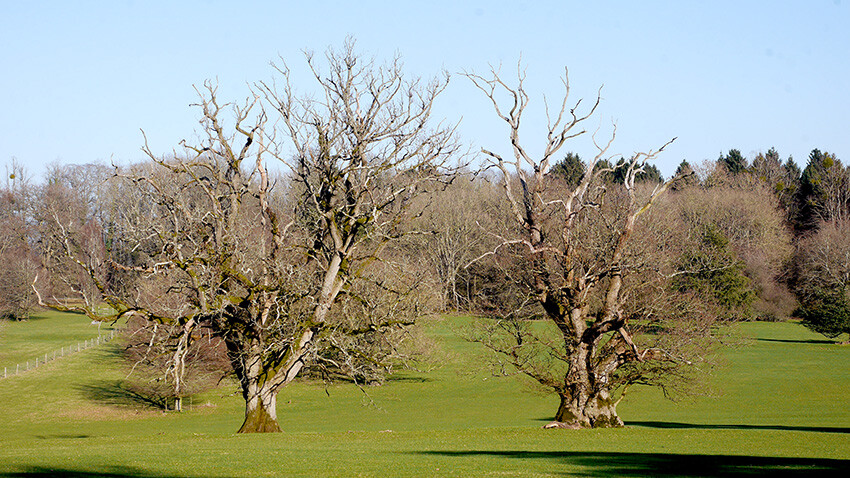
Heart of Oak
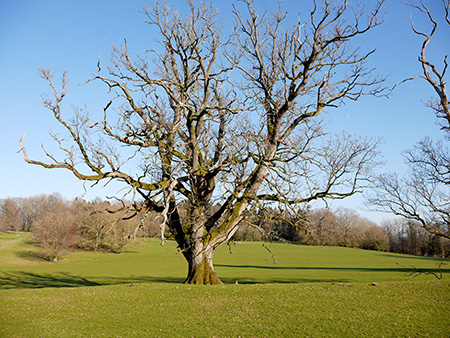 Walking towards Lime Avenue, I stop to open a wooden gate on the left hand side which leads into a large grassy parkland field. There, in the middle, reaching their craggy arms skywards, are two ancient oaks.
Oak trees growing in pasture such as this are not necessarily the tallest trees. Only slowly do they add inches and thus strength to their girths in contrast to trees which grow together in woods which tend to hasten upwards. With less sideways space the trees in a woodland need to become tall as quickly as they can to get as much sunlight as possible.
Walking towards Lime Avenue, I stop to open a wooden gate on the left hand side which leads into a large grassy parkland field. There, in the middle, reaching their craggy arms skywards, are two ancient oaks.
Oak trees growing in pasture such as this are not necessarily the tallest trees. Only slowly do they add inches and thus strength to their girths in contrast to trees which grow together in woods which tend to hasten upwards. With less sideways space the trees in a woodland need to become tall as quickly as they can to get as much sunlight as possible.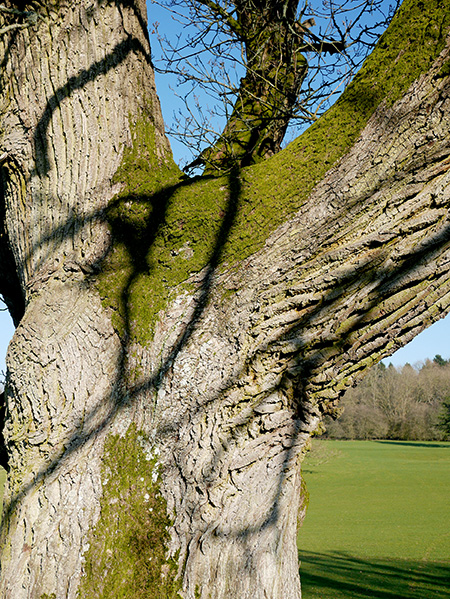 However, these oaks are surrounded by open space and light and can grow thick side limbs, some of which become hollowed out over time. The large levels of deadwood are retained within the tree and provide a huge number of different niches for a myriad of insects and other wildlife. The trunk becomes increasingly deeply fissured and cavities develop and, as they age, the furthermost highest branches die back so that the crown of the tree forms lower down to conserve energy and resources.
However, these oaks are surrounded by open space and light and can grow thick side limbs, some of which become hollowed out over time. The large levels of deadwood are retained within the tree and provide a huge number of different niches for a myriad of insects and other wildlife. The trunk becomes increasingly deeply fissured and cavities develop and, as they age, the furthermost highest branches die back so that the crown of the tree forms lower down to conserve energy and resources.
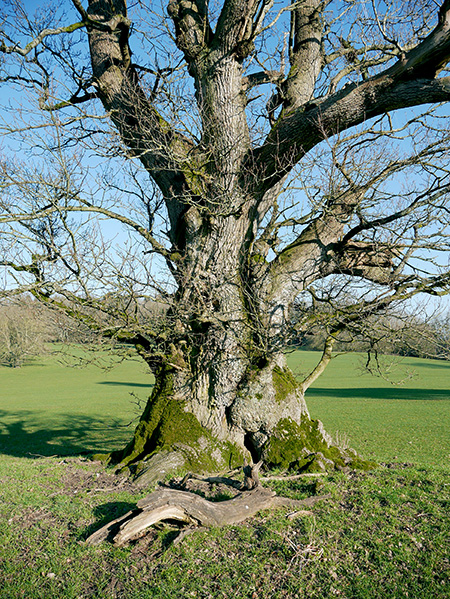 As there is always light available in such wide open spaces, the trunk becomes a haven for a number of beetles. The deadwood in parts of the tree is warmed by the sun making this feature important for the tree dwelling fauna as well as the flora. Fungal fruiting bodies and a high number of interdependent wildlife species mean that each oak supports over 2,500 different wildlife species or organisms
As there is always light available in such wide open spaces, the trunk becomes a haven for a number of beetles. The deadwood in parts of the tree is warmed by the sun making this feature important for the tree dwelling fauna as well as the flora. Fungal fruiting bodies and a high number of interdependent wildlife species mean that each oak supports over 2,500 different wildlife species or organisms
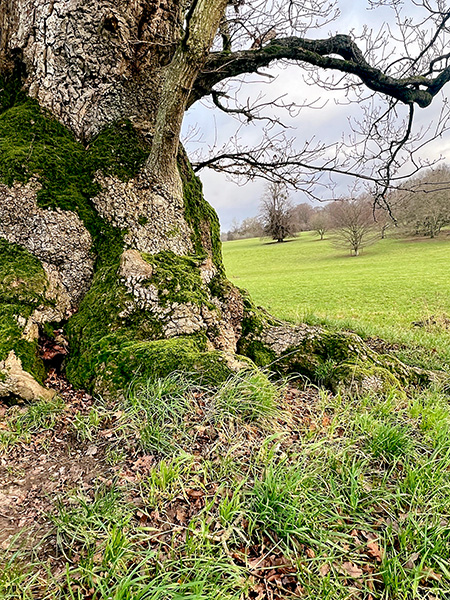 Parklands are also important as the lack of ploughing means the soil structure is left largely intact meaning that the complex ecosystem of the subterranean world is undisturbed. They have extensive root systems that help prevent soil erosion, stabilise slopes, and improve water infiltration. The network of roots creates a firm grip on the soil, reducing the risk of landslides and erosion during heavy rainfall. This is not so relevant here at Highclere but something to bear in mind. Additionally, the fallen leaves and acorns create a rich layer of organic matter promoting nutrient recycling, and enhancing fertility.
Oaks absorb carbon dioxide from the atmosphere and store carbon in their biomass and the soil. Mature oak trees and forests have the potential to store substantial amounts helping to reduce greenhouse gas emissions and regulate the Earth’s climate. Oaks can live for up to 1,000 years but these two are only middle aged at about 400 years old.
Parklands are also important as the lack of ploughing means the soil structure is left largely intact meaning that the complex ecosystem of the subterranean world is undisturbed. They have extensive root systems that help prevent soil erosion, stabilise slopes, and improve water infiltration. The network of roots creates a firm grip on the soil, reducing the risk of landslides and erosion during heavy rainfall. This is not so relevant here at Highclere but something to bear in mind. Additionally, the fallen leaves and acorns create a rich layer of organic matter promoting nutrient recycling, and enhancing fertility.
Oaks absorb carbon dioxide from the atmosphere and store carbon in their biomass and the soil. Mature oak trees and forests have the potential to store substantial amounts helping to reduce greenhouse gas emissions and regulate the Earth’s climate. Oaks can live for up to 1,000 years but these two are only middle aged at about 400 years old.
 Oaks have captivated humans for centuries with their strength, beauty, and resilience. Once considered sacred, they hold a special place in our hearts. The phrase ‘heart of oak’ reflects a naval anthem and oaks were essential to the success of the British navy. When these Highclere trees were young saplings Elizabeth I was standing at Tilbury encouraging the navy to fight against the Spanish Armada. She placed her “chiefest strength and safeguard in the loyal hearts and good-will of {her}..subjects”.
Elizabeth I (1533-1603), daughter of King Heny VIII, survived a childhood of endless political intrigues before succeeding to the throne in 1558. As queen she stated that she would 'direct all my actions by good advice' and ‘rule by good counsel”. She had learnt caution the hard way.
Oaks have captivated humans for centuries with their strength, beauty, and resilience. Once considered sacred, they hold a special place in our hearts. The phrase ‘heart of oak’ reflects a naval anthem and oaks were essential to the success of the British navy. When these Highclere trees were young saplings Elizabeth I was standing at Tilbury encouraging the navy to fight against the Spanish Armada. She placed her “chiefest strength and safeguard in the loyal hearts and good-will of {her}..subjects”.
Elizabeth I (1533-1603), daughter of King Heny VIII, survived a childhood of endless political intrigues before succeeding to the throne in 1558. As queen she stated that she would 'direct all my actions by good advice' and ‘rule by good counsel”. She had learnt caution the hard way. The next Elizabeth succeeded to the throne nearly 400 years later and, like her predecessor, valued listening and good advice: “I pledge myself to your service, as so many of you are pledged to mine. Throughout all my life and with all my heart I shall strive to be worthy of your trust”.
The next Elizabeth succeeded to the throne nearly 400 years later and, like her predecessor, valued listening and good advice: “I pledge myself to your service, as so many of you are pledged to mine. Throughout all my life and with all my heart I shall strive to be worthy of your trust”.
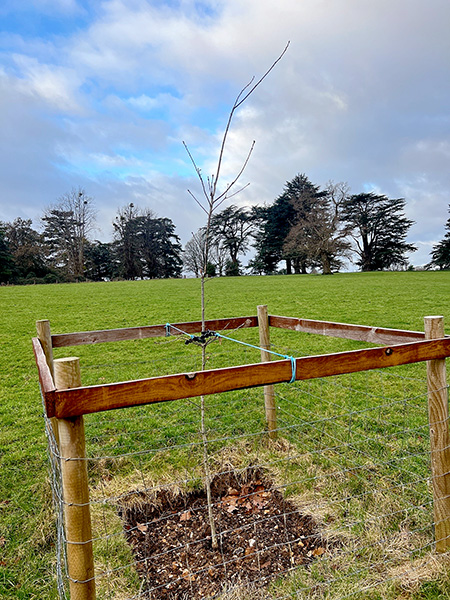 Just by the two old oaks are two newer saplings. Planted in the reign of the late Queen Elizabeth, they represent resilience, longevity, constancy and courage: hearts of oak.
Happy New Year.
Just by the two old oaks are two newer saplings. Planted in the reign of the late Queen Elizabeth, they represent resilience, longevity, constancy and courage: hearts of oak.
Happy New Year.
58 Comments
What a lovely, touching story. My compliments.
I too have some acreage of undisturbed trees. Being in America I often imagine early Native Americans slipping around and in between the many trees. And even if not, the trees have provided habitat for numerous woodland critters.
Thank you for the lovely tribute to these beautiful specimens.
I too love thinking about American Indians wandering through the forests of their day hunting, or scouting enemies, or moving with their families to other living spaces. I learned in Girl Scouts that bent limbs in older trees often meant that those limbs were bent, and tied to the ground to stay bent so that directions could be recognized by other wandering tribes who were friends.
I saw a beautiful exhibition in Omaha - People of the Interiors - it told stories of natural knowledge..
Thank you for this and a Happy New Year to you as well.
Lovely tribute to the mighty oak. Happy New Year!
Happy New Year
Beautiful written and a very nice gesture to queen Elizabeth II. Happy new year to you and your family & of course all the cute dogs!
The oak tree over the hedge at the bottom of our garden was blown sideways in the great storm of 1987 but, thankfully it did not fall, I look forward every year to the haze that appears when it is about to break into leaf every Spring and I would have been broken hearted had we lost it.
Lovely the picture of heart the oak did you and lord Carnarvon have a lovely weekend and Happy new year 2024
Throughout her reign our late Queen absolutely demonstrated resilience, constancy and courage and remains an example for us all. Thank you for writing about HM especially as one year closes and a new one begins. Here's wishing you , your family and friends a very Happy New Year.
Happy New Year
Wow, such majestic old oaks. Like the nation they represent they stand for strength and honor.
I love the way you always give us a wealth of knowledge to enrich our lives! Thank you
Christine Tyrie
HAPPY NEW YEAR TO ALL AT HIGHCLERE CASTLE.
Happy New Year Lady Carnarvon!
Thank you for another informative article, I never knew Oaks were so busy & vital to life within & around them! If ever I want to hug a tree, it's always the beautiful magnificent Oak......
Thanku again, & I hope 2024 brings you good health & much happiness, love to you all,
Caroline xxxx
HAPPY NEW YEAR, Lady Carnavon !
Thanks for your beautifully written messages which help me and encourage me to enlarge my English vocabulary !
Best wishes from Paris !
Claude Gamelin-Barat ( once your son's French teacher )
Best wishes to you!
Age is good!
Beautiful! Love your emails every Monday, thank you so much. Wishing you and your family a Healthy, Happy and Prosperous New Year.
The world lost something tangible yet difficult to explain when Her Majesty, Queen Elizabeth II died. It’s the same feeling when a mighty oak is felled. What appeared to withstand time having succumb to that which is master of all, reminds each of us that we too have our time. May we all have joy, peace and hope as we navigate our journey and take comfort in what we can conserve and honor during our time. Happy New Year to all.
Thank you Lady Canarvon, the Oak is my most favourite of the trees. I don't know everything about them, but reading your blog is another lesson learned. A very Happy New Year to you and your family.
Happy new year Lady Carnarvon,
thank you for a wonderful very informative news years day blog . How amazing it is to have such beautiful Oak trees and so old . I always find myself drawn to your beautiful trees in the grounds of Hyclere .
Interesting details and photos Monday morning again, thank you!
Sorry I forgot to mention to you during your Christmas Season Blogs that I was enjoying reading your Christmas At Highclere Castle Book again.
Happy & Healthy New Year to you Lord Carnarvon and your families too.
Thank you so much !
Thank you, thank you for a beautiful
Message……I hugged the tree in my mind.
Every full wish for a healthy, happy and prosperous New Year to all .
Marguerite
Happy New Year and look forward to 2024 posts of love and growth from you
Hello Lady Carnarvon. As a woodturner I have a particular fondness for English Oak. I like to use Timber from field oaks as being gnarly it lends itself to turnery work. For every item I turn I try to plant another tree. They are very easy to grow form acorns. I grow them in pots and plant them out after a couple of years. A couple of friendly local landowners let me plant them on their land.
Best wishes and a happy new year to you and your family.
Nick.
We also have trees growing from acorns
Happy New Year, Lady Carnarvon and to your family
fondly Jenny
Dear Lady Carnarvon,
Happy New Year! What a beautiful history and science lesson… I had no idea of the incredible breadth of life -sustaining force each oak provides! Your photography is again so poignant and beautiful. I live in a wonderful wooded area, and our tree company speaks of how the trees support each other and hold each other up. It is very sad whenever a glorious one has to be removed.
May we strive to be as strong and resilient as the oaks, and hold each other up as the woodland trees do! Happy New Year!!
Best regards,
Charlotte Merriam Cole
I have all your books and love all your articles. This one is especially endearing as you correlate the mighty oak with the wonderful Queen Elizabeth II. We may never see her likes again. She was young when her reign began as was Elizabeth I. Both learned great wisdom and perseverance as they grew older. I am looking forward to your 2024 posts! Happy New Year!
When we moved into our new home 10 years ago, we had an oak tree planted in the front yard. At that time, it was a youth tree, ten years later, it is a tall beautiful maturing oak. It provide acorns for the squirrels and also dreys condominiums. Unfortunately, we don't have the amazing space that you have for your trees. We live half an hour from Washington D.C. and land is very expensive. So, one day, the home owners association prunned the lower branches because they were growing onto the walkway and my husband almost had a heart attack. He loves his oak and no one is allowed to touch it. Now, we have a tree prunner that takes care of this beautiful tree.
Lady Carnarvon,
Thank you for this lovely reminder of how our mighty oaks have endured the weather of centuries. I live in Cary, next to Raleigh, North Carolina, the City of Oaks. Raleigh “drops” a huge brass acorn (about 50 ft in circumference) at 12 midnight on New Year’s Eve.
May Highclere and all who love the lovely castle and its inhabitants who work and live there, enjoy a hopeful, peaceful and just New Year.
Martha G.
I truly enjoy your writings. May your New Year be a prosperous one!
Thank you for writing so beautifully and with the knowledge and story behind our lovely oak trees, so gorgeously standing on your open field and the lovely tribute of our late Queen Elizabeth ll. Many blessings & Happy New Year
The mighty oak. My tree is still young, it's only 40 years old. It is something special, home to different animals and birds.
Thank you.
Happy New Year!
Carolyn Trodden
Dear Lady Carnarvon
Happy New Year to you and all of the Highclere family from the central US. Here’s hoping your new oaks do as well as the old, so that in another 400 years, your descendants can look back the same way and Remember Queen Elizabeth II much as the first tree links you to the original Elizabeth.
I hope so too
Lovely picture of heart of oak happy new year to you and lord Carnarvon and your staff at highclere castle
Happy New Year to you!
As the solar panel consultant walked our property assessing its suitability for the project, he gestured toward our 93 foot tall oak tree and said, “of course that will have to come down.” We thanked him for his time and sent him on his way.
Happy New Year!
Thank you. I enjoy your writings. They are always interesting.
Thank you
I always enjoy starting my week with your informative and entertaining post. Today I get to start not only my week but the year as well.
Happy New Year to you and all those around you.
Happy New Year to you!
Queen Elizabeth II was rooted in the English and commonwealth as much as any oak in the realm She was in the hearts and affections of Anericans as well and held dearly in high esteem as well a worldwide what a precious tribute on new years day .
Here’s to a glass or two of bubbly on a wonderful start to the year. Thank you Lady Carnarvon !!!!
Best wishes Laura
Love your descriptions of the oaks and all they do to preserve our world. I miss Queen Elizabeth II she was a great Lady!
Oak trees are magnificent. I wish there were more of them in my neighborhood here in Maryland. Thank you for a very informative message about these lovely trees.
Happy New Year!
Thank you for a good start to this new year -reminding us of the importance and value of constancy, longevity, courage and resilience.
Blessing to you and your family.
Dear Lady Carnarvon,
I wish the best for your family and home in 2024. Happy New Year.
Susan
Happy New Year to you, Lord Carnarvon the rest of the family and staff: Including the puppies.
Growing up in the Iowa, oak trees make up a large part of our timbers. We had about a 40+ inch diameter oak just outside our window. Every time I go home I always look to be sure ut us still standing straight and tall.
Enjoy what's left of your quiet time
Happy New Year Lady Carnarvon
Thank you for the most interesting story of the Oaks
My favorite tree of all.
Sending every good wish to you and your family for 2024 from Canada
All the very best
Kathleen from Barrie Ontario Canada.
A very happy new year and thank you for all the interesting blogs
Much of the furniture in my home is from the "Arts and Crafts" period, made from quarter sawn oak, which brings out the grain. Somewhat out of style today... but I couldn't live without it!
Have a Blessed New Year!
Thank you ... I learned so much!
Yet another intelligent, thought-provoking essay Lady Carnarvon. Oak trees were held sacred by our California Native Peoples as well. Drive along any back road, and you may see an oak grove that was planted by their ancestors. You might also spy an Acorn Woodpecker, that has created a storage tree by drilling holes, and filling it with acorns only to have a stealthy squirrel or blue jay steal them away. Wishing you, and everyone a very Happy New Year!
And a very happy New Year to you
Dear Lady Carnarvon:
Thank you for this Monday's blog and comparative story of the mighty oak to prior monarchies.
Wishing you, Lord Carnarvon, and everyone at Highclere Castle a Happy New Year.
Perpetua Crawford
A lovely tribute to the mighty oak, Lady Carnarvon. Although my California live oak is only a mere 150-200 years old, it is one of the largest trees in the surrounding area and I am looking at it with admiration right now. I will be selling my home soon and can only hope the new owners love it as much as I have for the last 29 years. I appreciate your stories, especially those about the gardens and grounds - you and your family are caring stewards of the land.
May the new year bring you much happiness, peace, and joy. We all need it after a very trying 2023. Much blessings to you and your family in 2024! Hau’oli Makahiki Hou! (Happy New Year in Hawaiian)
I can’t help thinking also of Major Oak
as part history and literary tradition.
Sherwood Forest, Nottinghamshire with its ancient (400 y o ) and its veteran (500 y o) oaks also a treat for old tree lovers. Happy to wish your ew plantings a long life and you a wonderful New Year.
WE have some tiny "children" oaks here from that tree...
Beyond our rear garden wall, a beautiful old oak tree fell during the night during an autumn storm recently.
When looking out the next morning and seeing the huge gap, I was horrified when I realised it had gone! After over 50years of living here, I miss it so much, as well as watching all the birds that flew in and out all day.
We must treasure our old oak trees.
Thank you for still another magnificent & informative article about a subject so near and dear to me.....conservation of forests and trees !! May this information be shouted from the treetops for ALL to HEAR....thank you Fiona !!
"Hearts of Oak" , beautiful analogy. Many blessings in the New Year.
Hi Lady Carnarvon Happy New Year! Reading your blog I am reminded of the recently released film The Giants all about 1,000 year old trees in the Tasmanian Rainforest and the people who fought to save them from destruction including the legendary Dr Bob Brown who served as a Member of Parliament! The film is available to rent out and the rainforests are incredible!
Thankyou for your eloquent tribute to Queen Elizabeth II the wonderful monarch who introduced the Queen’s Green Canopy project to Commonwealth countries
Thankyou
FLEURINA
Orange City East
Central Western NSW Australia
I learn so much from your blogs, and your writing is captivating. I’m so glad my love for “Downton” introduced me to the real story of this magnificent castle and its people. Someday I will make it over for a visit. Happy New Year!
Dear Lady Canarvon,
Happy new year from Canada! I have always been fascinated by the fact that the mighty oak was used for many centuries, well over 1000 years, for Crook shanked beam construction in every conceivable style of architecture from barns to cathedrals all over the world, Britain and Europe. A prime example being Notre Dame, much of which was tragically lost in a fire a few years ago. The loss of that roof was so much more than a loss architecturally speaking. It represents the fortitude of humanity and to the glory of God.
In Canada, we are tragically losing that deep understanding and appreciation of the testament of those who came before us and the legacy they left us architecturally. The lessons are much deeper than brick and mortar. It has been said that the longer the dovetailed oak beam stands, the stronger it becomes.
With that said , what a wonderfully fascinating analogy, and moving tribute to the monarchy, specifically our beloved late sovereign Queen Elizabeth ll, and what she stood for. To say that she fulfilled her life mission would indeed be an understatement. God save the King! Blessings to you and yours for the new year! Michael from Ontario Canada
Happy New Year ,Lady Carnarvon
I'm looking forward to another year of your beautiful, heart warming sentiments.
Carol
North Carolina
Thank you for yet another lovely article. I am partial to oaks as my family name refers to the use of oak saplings in Germany for furniture making and charcoal burning. I have planted 3 oaks on my property and live near two majestic oaks of several hundred years of age. The squirrels plant plenty of acorns so I am always transplanting baby oaks to new locations.
I was delighted to see that you are continuing to plant new trees as well. Our planet’s future depends on us being good stewards not just with an eye to the present usefulness but to our future needs.
Lovely reading! Happy New Year!
I like nothing better than spotting a beautiful tree in the middle of a pasture.
Happy New Year, Lady Carnarvon!
We live in a condominium development that has 72 massive Oak trees. We treasure them! Recently, there has been an Oak tree disease in Michigan that we are mightily concerned about. We regularly use the services of an arborist to care for our trees. There isn't another tree that matches the majestic Oak.
Dear Lady Carnarvon,
Thank you very much for making our visit in January at Highclare Castle unforgetable. We wish you and your family all the best and good luck for all your further plans.
Very best greetings from the 'Starnberger See'.
Ralph & Steffi Weisheit, Germany
Leave a Comment


- Christmas
- Community
- Dogs & Horses
- Egypt & Tutankhamun
- Entertaining
- Farm
- Filming
- Gardens
- History & Heritage
- Daily Life
- Royalty
- Cooking
- Interiors
- Heroes
- Architecture
- Cars
- Conservation
- Downton Abbey
- Events
- Gardens & Landscape
- Highclere Castle Gin
- History
- Planes
- Restoration
- Stories & Books
- Uncategorized
- Visitors
- Wildlife

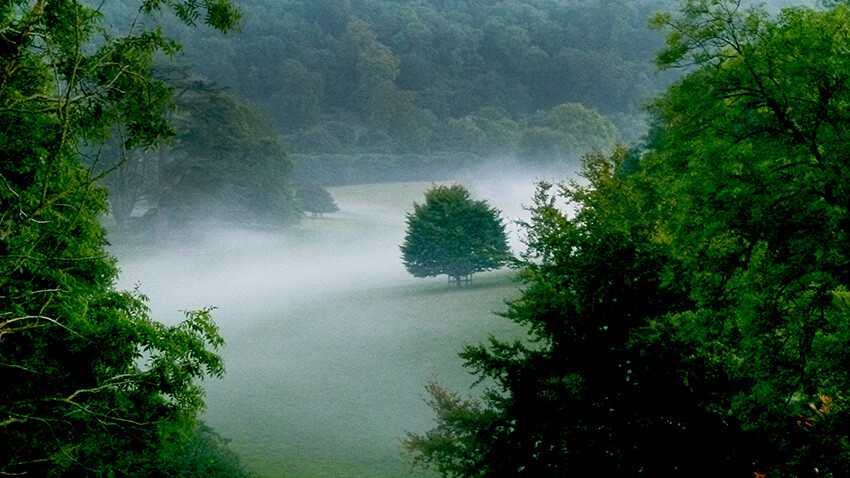
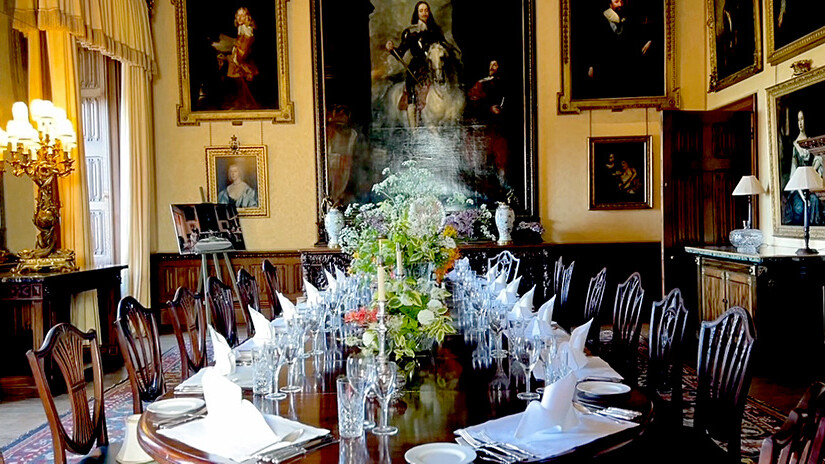
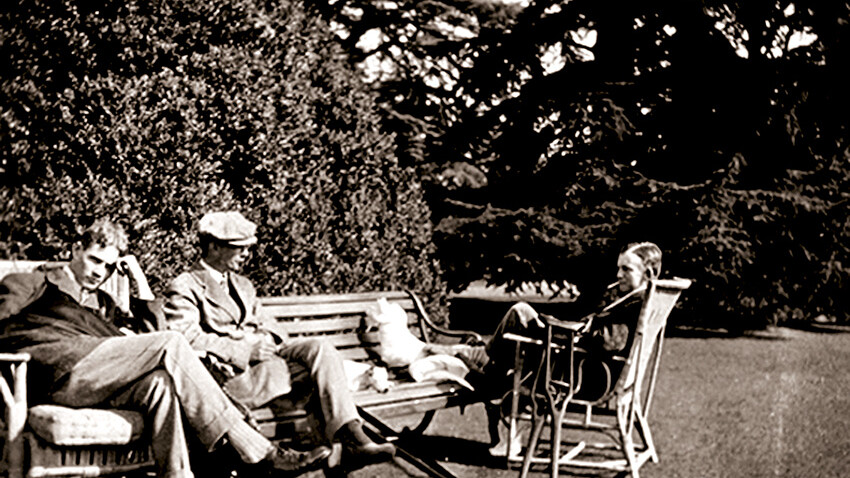
Happy New year, Lady Carnarvon.
Great article!
Regards, Corinne
Wonderful analogy ❤️❤️❤️
Thank you
Wonderful Article!
Truly, if we all had the character of what these mighty trees stand for, just as Queen Elizabeth had . The world would be a greater and peaceful place to live. I shall always remember the most humbling yet meaningful moment in my life, as a 19 year old American Soldier having the honor and privilege of wishing her Majesty Queen Elizabeth, a Happy Birthday.